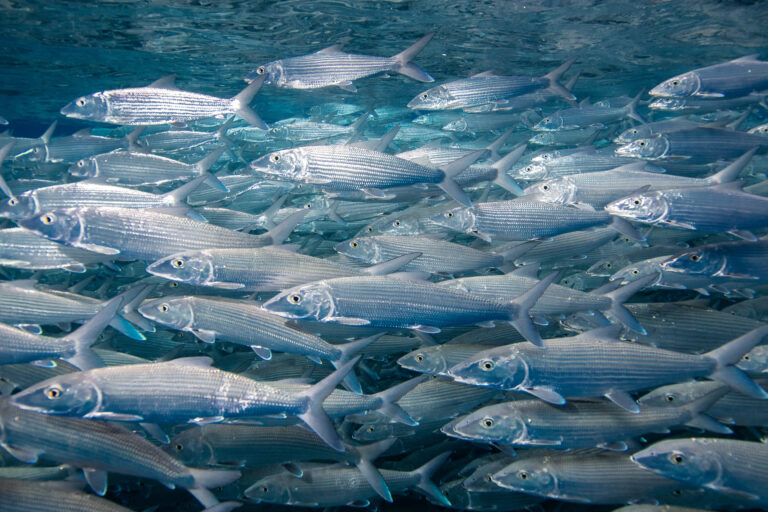Through tagging research, BTT has learned that bonefish have small home ranges, but migrate long distances – as far as 70 miles or more – to reach spawning grounds. BTT research has shown that at the end of their spawning migration, fish gather in large schools, called pre-spawning aggregations (PSAs). These PSAs can number 10,000 bonefish! At dusk, the aggregation moves offshore at night, where the fish descend hundreds of feet to spawn before returning to their home flats.
The identification and protection of PSA sites is paramount to stable bonefish populations. Since 2010, BTT has been working with colleagues and fishing guides in The Bahamas to identify PSA sites. Eleven such sites have been confirmed in The Bahamas, and three of these sites were included in new national parks that were designated by the Bahamas National Trust (BNT) in 2015. BTT is working with BNT and other partners to develop site-specific protections for the locations outside of national parks, and to safeguard against illegal harvest and habitat loss along the spawning migration pathway. Similar research and conservation advocacy is ongoing in Belize, where one site has been confirmed.
In the Florida Keys, BTT scientists are applying the protocol developed in The Bahamas to identify bonefish PSA sites. Finding these nearshore areas where bonefish school by the thousands before migrating offshore to spawn in deep water is the vital first step in protecting PSA. In recent years, the Florida Keys bonefish fishery has made a comeback, and a number of Keys guides have reported seeing schools of bonefish in nearshore waters that might be PSAs. BTT is using acoustic telemetry and drones to home in on these possible spawning sites identified by local guides, some of whom first observed likely bonefish PSAs in Keys waters decades ago. This renewed search builds upon BTT’s previous work with guides and anglers in the Keys and the Bahamas to decipher the life cycle of bonefish, their habitat use, movement patterns, and spawning behavior.
BTT is also working in Belize, Mexico, and Cuba to identify PSA sites, and partner with local regulatory agencies to protect spawning fish from netting and habitat loss.




